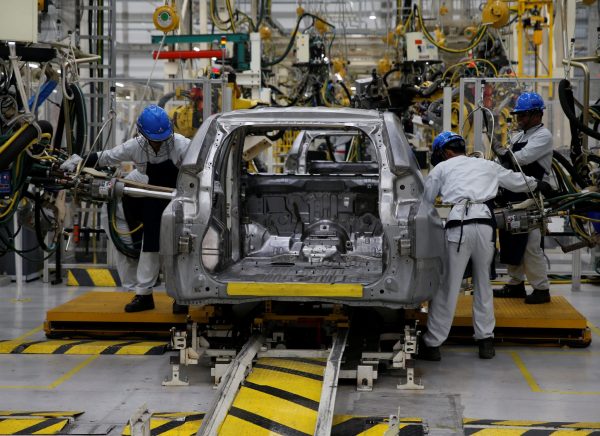A major item on the agenda will be regional security and addressing the rising tide of terrorism. This takes ASEAN back to its roots, having been born as a political–security pact during the Vietnam War.
Indeed, ASEAN’s role in sustaining peace and stability in Southeast Asia is often undervalued if not outright overlooked. It’s easy to see why. War can never go unnoticed but peace can be easily. ASEAN deserves its share of the credit for delivering the peace dividend. But moving forward, its economic success may depend on a different kind of cooperation.
The summary of key outcomes from the 49th ASEAN Economic Ministers Meeting in September noted that the overall thematic priority of the 2017 Summit will be ‘inclusive, innovation-led growth’. This will be supported by three strategic measures: increasing trade and investment, integrating micro, small and medium enterprises (MSMEs) into global value chains and developing an innovation-driven economy.
The trade slowdown appears to have bottomed out, and there are early indications that both domestic private investment and foreign direct investment are slowly recovering in countries like Malaysia and Indonesia, and they continue to increase impressively in the Mekong countries. To sustain this growth, reforms will need to continue. Achievements on tariff liberalisation have been partially offset by a rise in non-tariff measures, which are a much more significant barrier to trade.
A new and growing trend in cross-border investment involves MSMEs — so much so that the last ASEAN Investment Report took this as its theme. And an innovation-driven economy must address the challenges and opportunities presented by the so-called Fourth Industrial Revolution (4IR).
All three strategic items are linked, especially the last two, as discussed in a joint Asian Development Bank–World Economic Forum report titled What does the 4IR mean for ASEAN Regional Economic Integration?, which is to be presented to leaders at the upcoming Summit.
The report notes the differing level of preparedness of member countries (which is negatively correlated to their level of development) and how this may widen rather than narrow development gaps if not addressed.
One of the major challenges of the 4IR will be the loss of jobs caused by automation and increasingly advanced robotics and artificial intelligence. Job losses will affect some countries more than others. Low-skilled, repetitive jobs (such as assembly line workers) are most at risk, and service jobs (such as business process outsourcing) will be increasingly under threat.
As an immediate response, enabling greater mobility of unskilled workers would curtail unemployment in net labour-sending countries and help sustain growth in net labour-receiving ones while also helping counter growing economic inequality within and between countries.
In the medium term, new industries will grow and workers will need new skills. Investing in improving human capital must start now. The skills needed extend beyond technical capabilities to include creativity and innovative problem solving. What’s more, the accelerating pace of change calls for adult training and lifelong learning. Early-life education is no longer sufficient. In addition, mutual recognition agreements must expand to cover new occupations, while expediting the harmonising and streamlining of employment visas.
More than 90 per cent of enterprises within ASEAN are MSMEs and they provide most employment in member states. For this 90 per cent, one of the major opportunities of the 4IR is the potential of ‘disruptive technologies’ to empower MSMEs.
MSMEs are often constrained by lack of access to business and financial services, but blockchain technology has the potential to dramatically increase the security of cross-border financial transactions and logistics even in countries where these services are relatively underdeveloped. This technology has the potential to benefit the smallest firms in the poorest countries of ASEAN.
The rise of online marketplaces also provides platforms for MSMEs to access regional and global markets.
The 4IR provides an opportunity for ASEAN to meet its goal of greater inclusion by integrating MSMEs into global value chains — but it also presents a challenge to the region to invest in human capital to continue to trade and attract investment and to enable innovation-driven economies.
Given the unequal impact of new technologies in the region, the promotion of inclusive growth must also be seen as a key pillar in underpinning peace in the region. Growing economic inequality could quickly contribute to social unrest and political instability. Embracing the 4IR with inclusive, innovation-led growth will be essential to securing another 50 years of peace in Southeast Asia.
Jayant Menon is Lead Economist in the Economic Research and Regional Cooperation Department at the Asian Development Bank, and Adjunct Fellow of the Arndt–Corden Division of Economics, The Australian National University.
Anna Fink is Economist in the Economic Research and Regional Cooperation Department at the Asian Development Bank.
This is an abridged version of an article that first appeared here in the Asian Development Blog.

